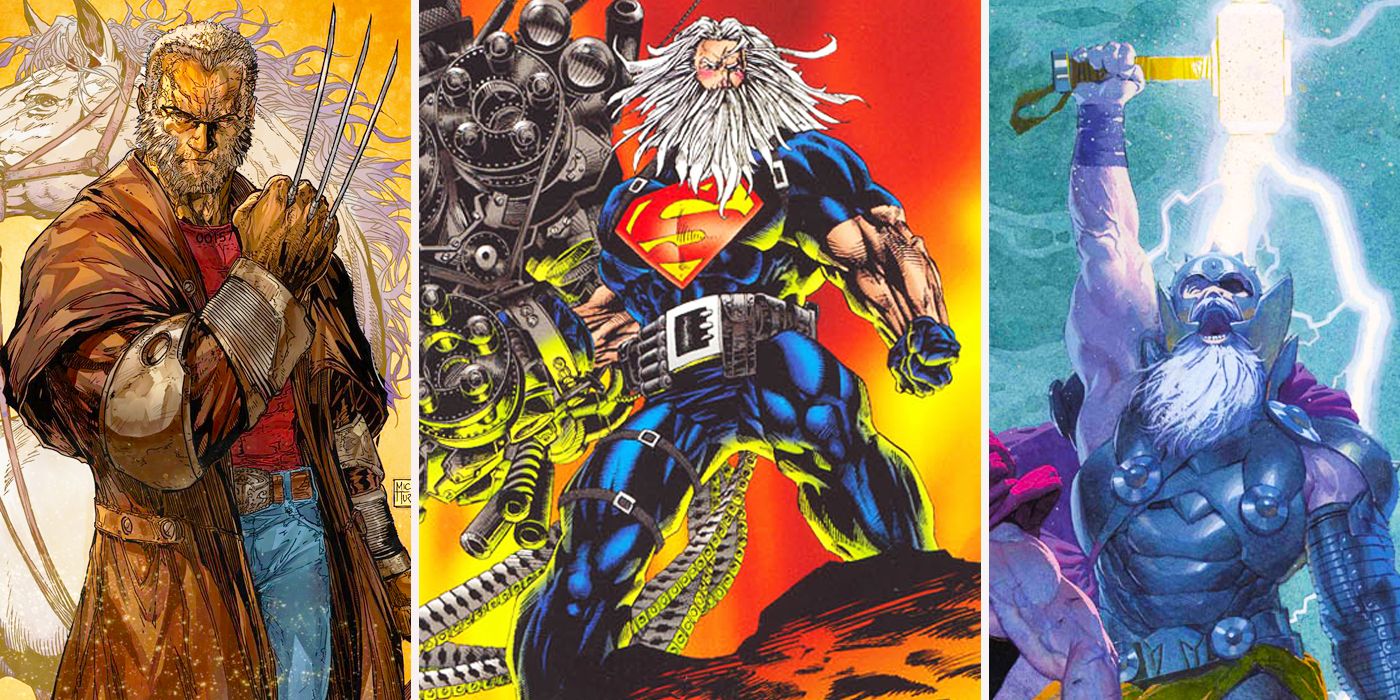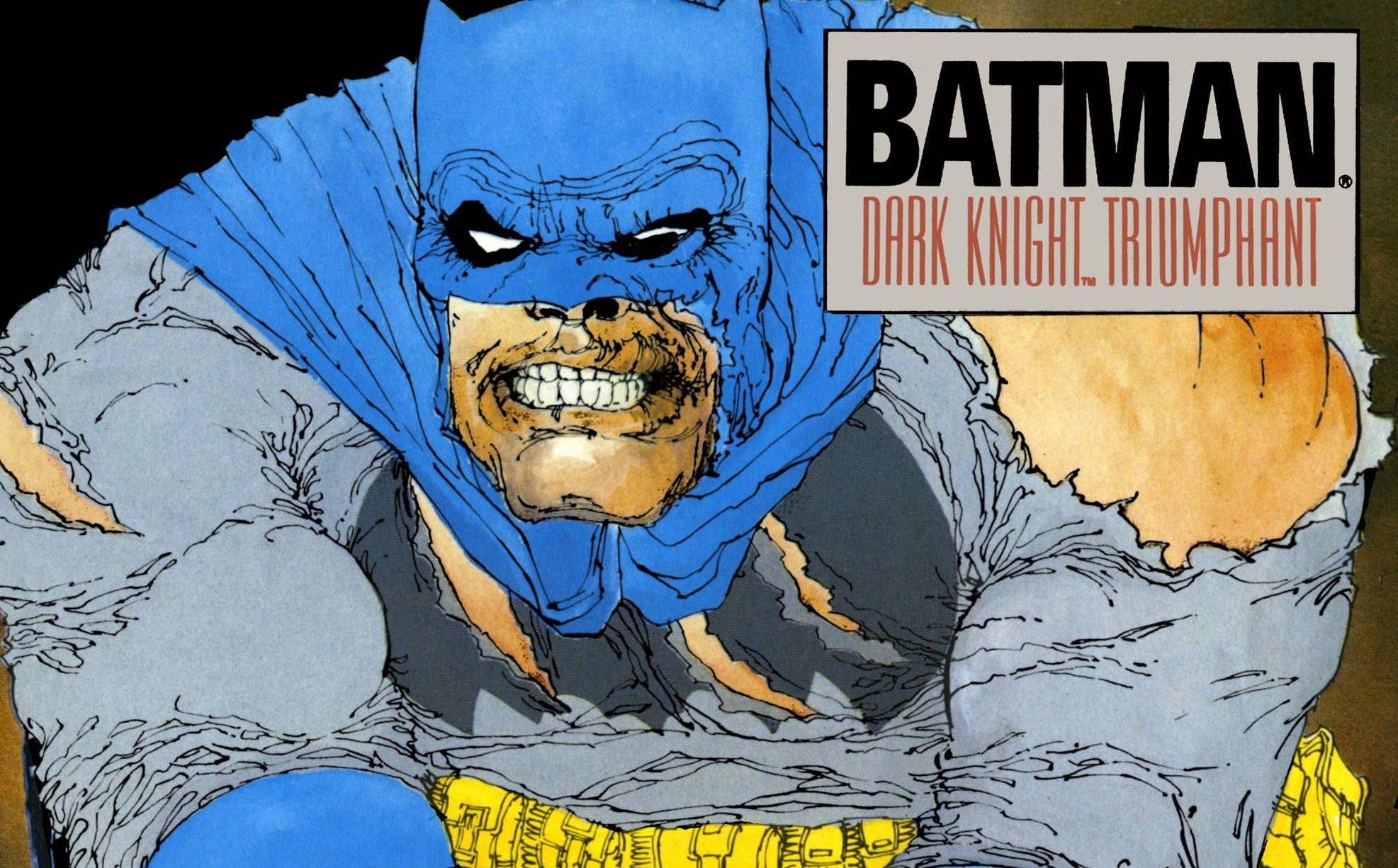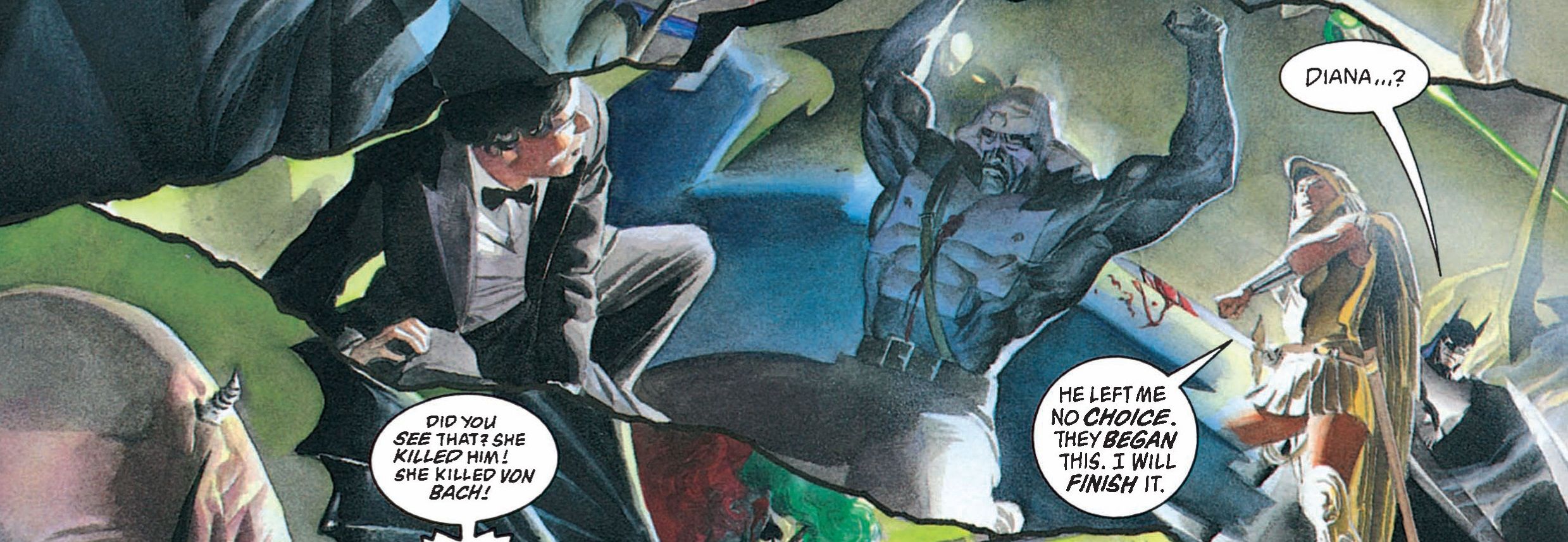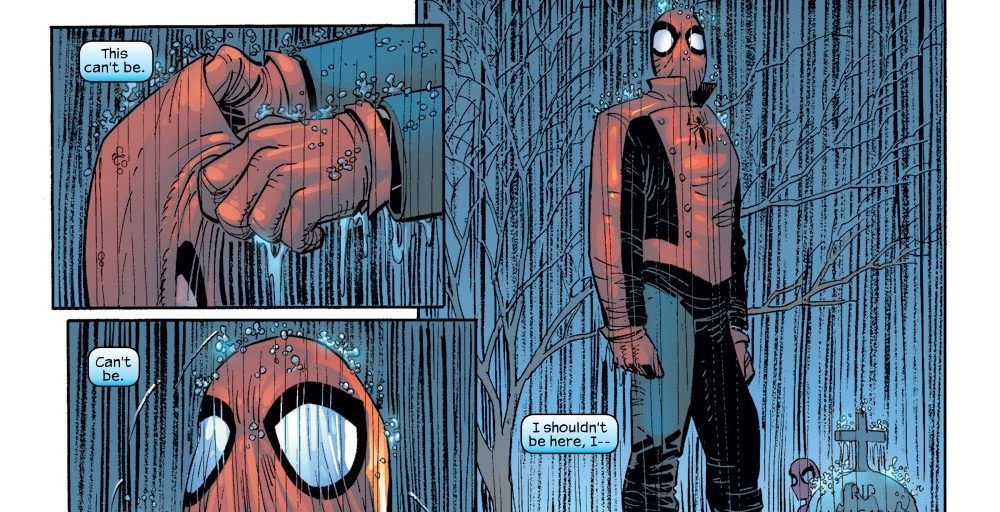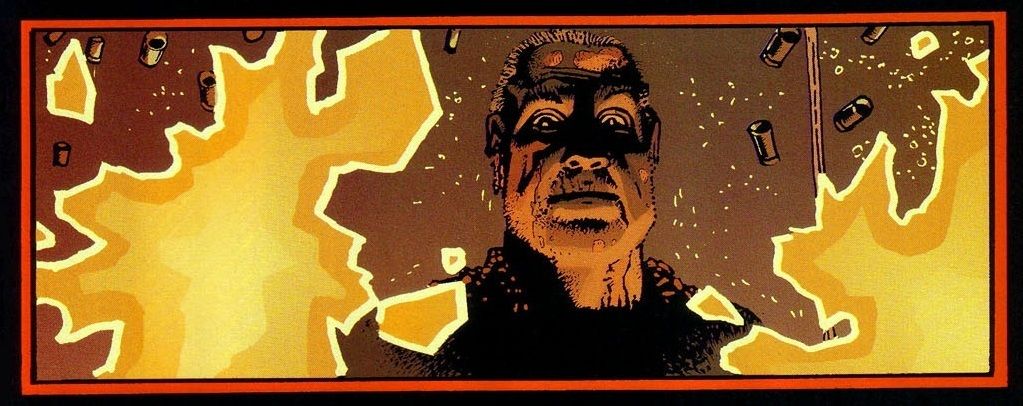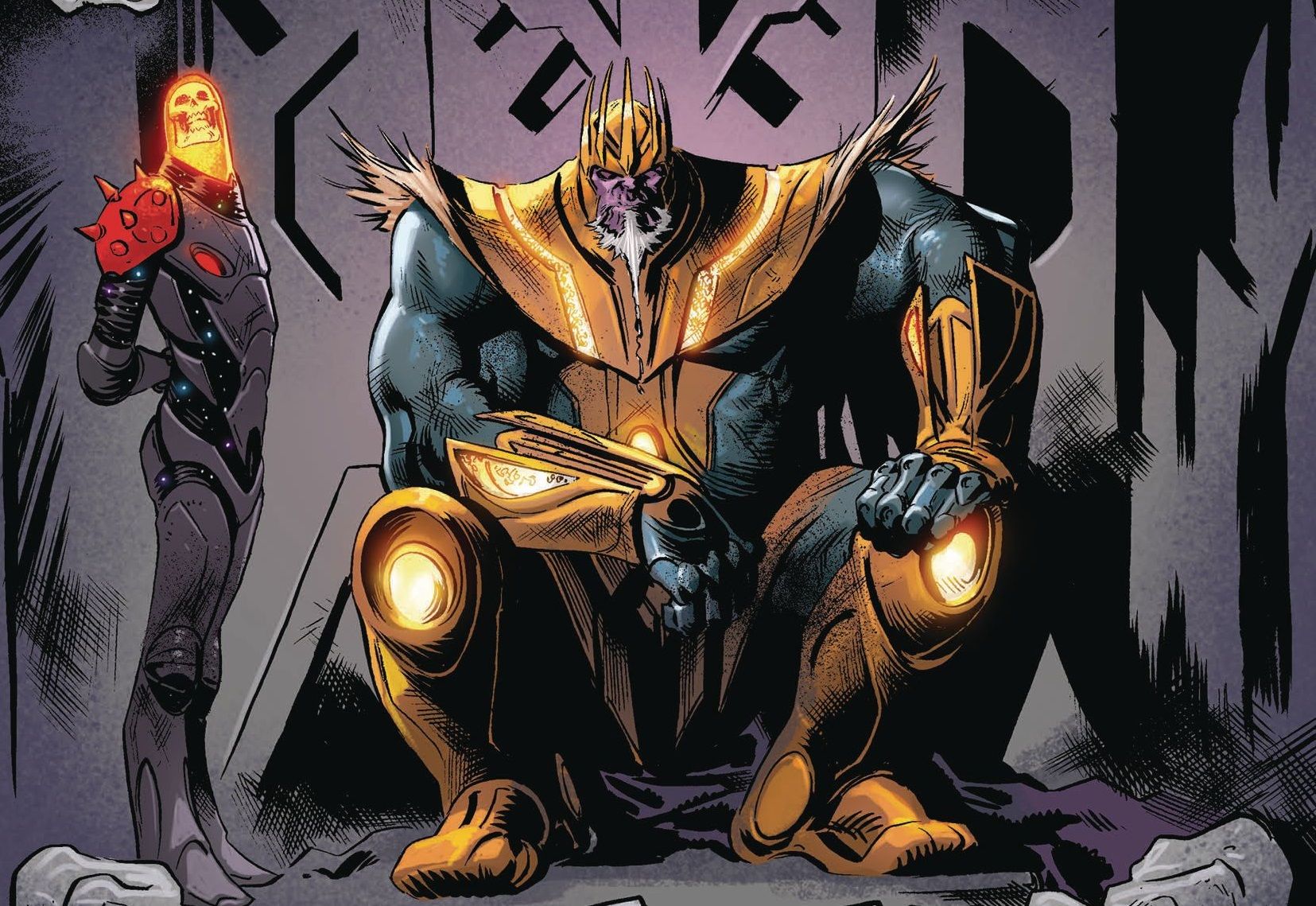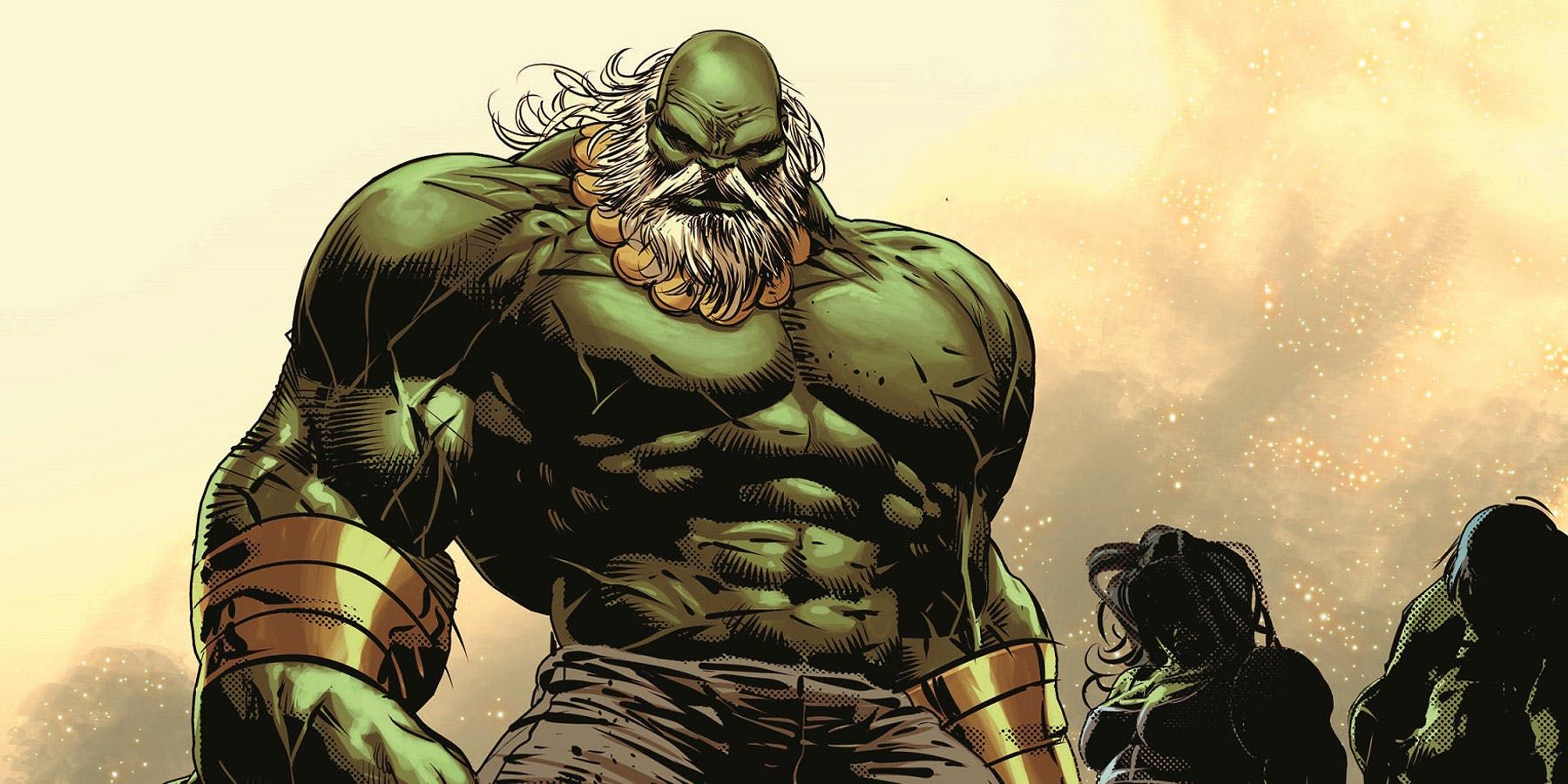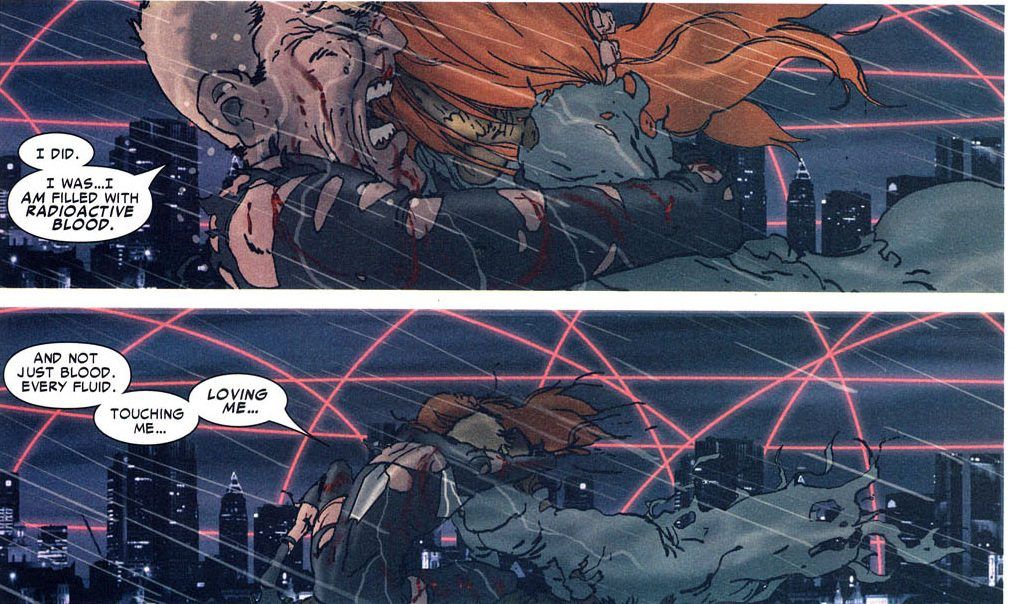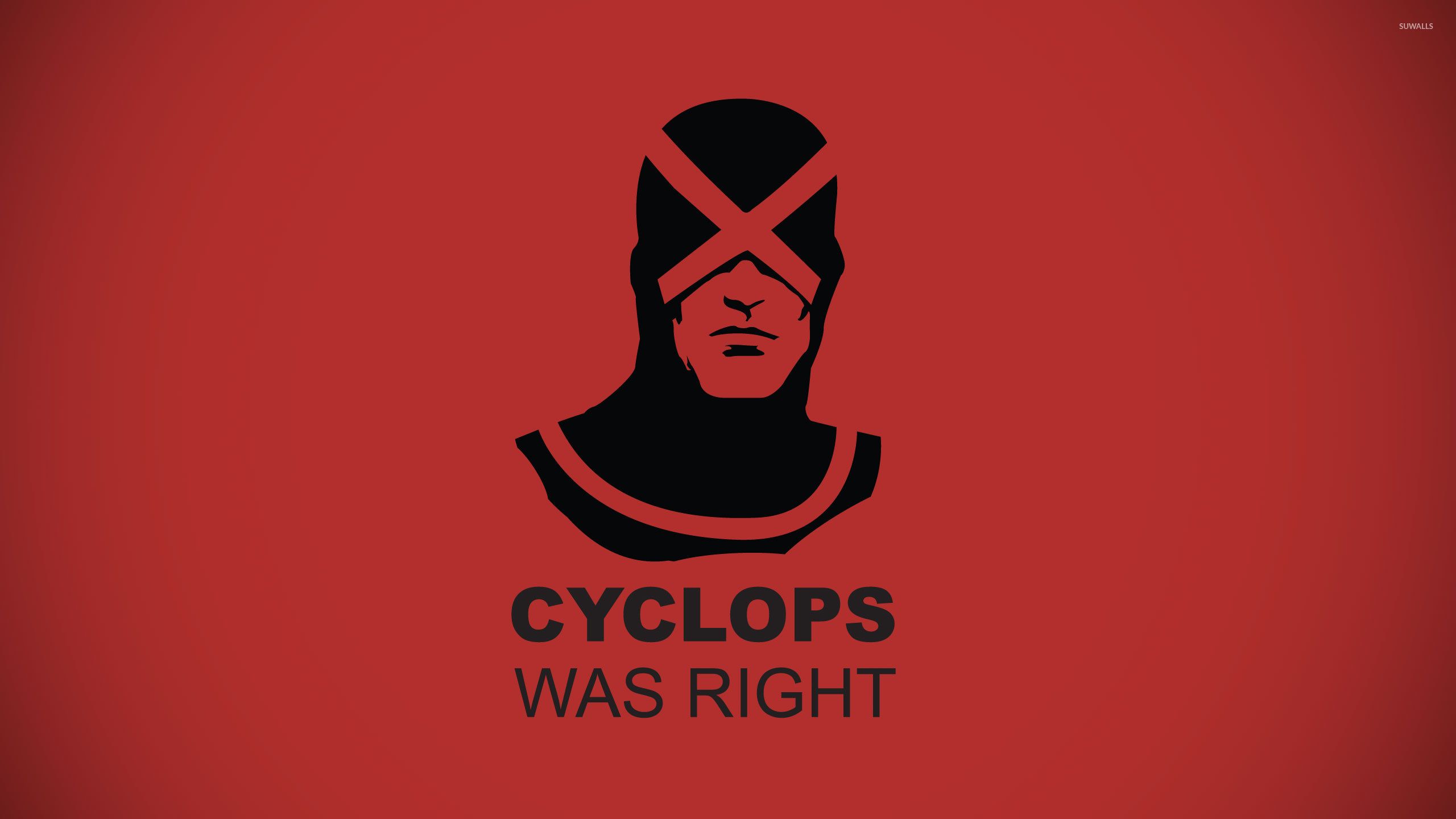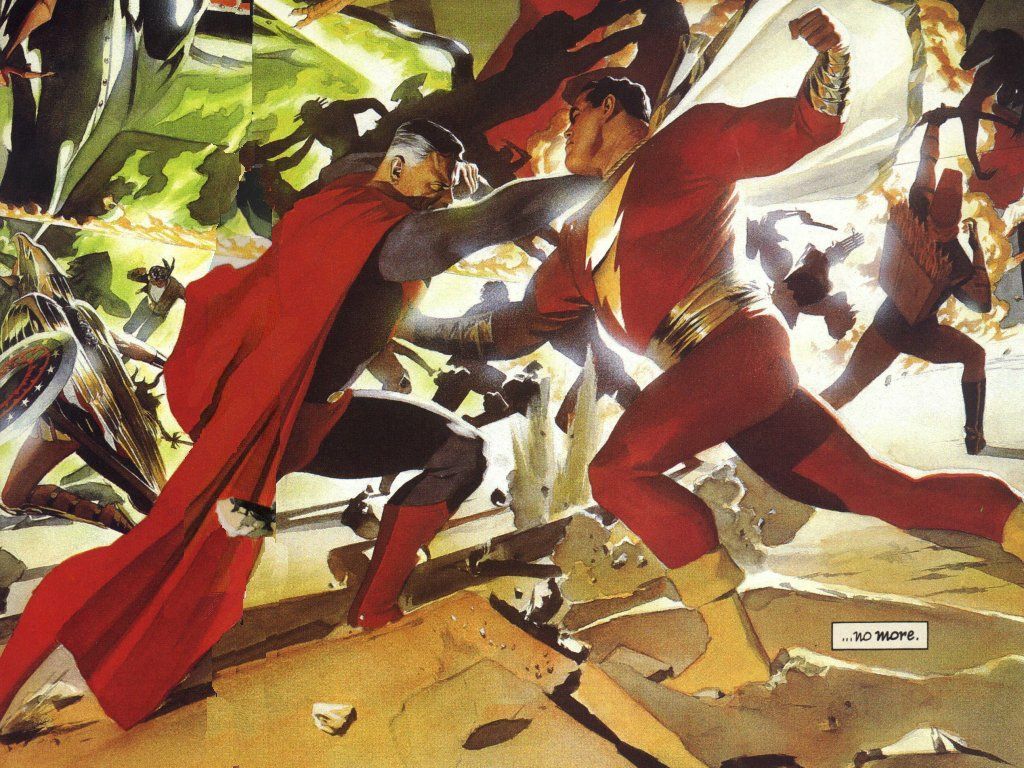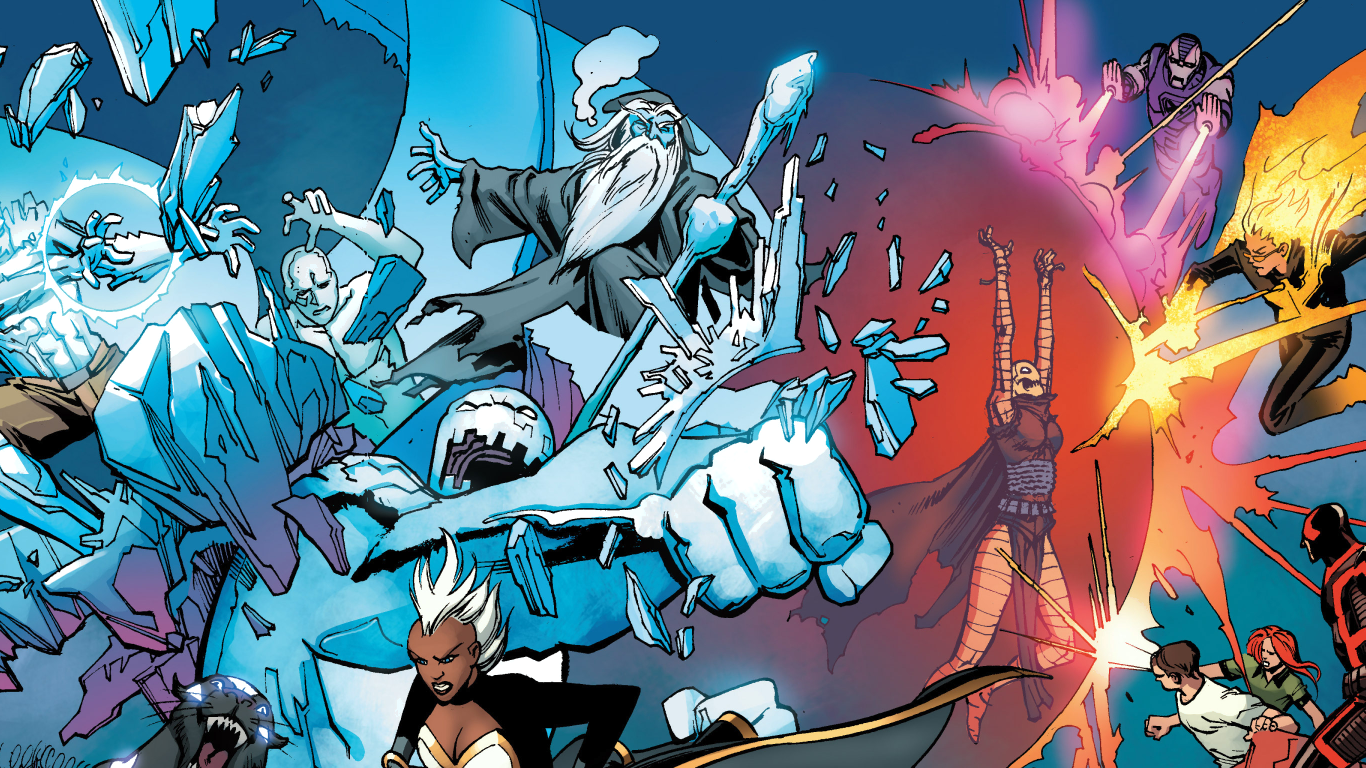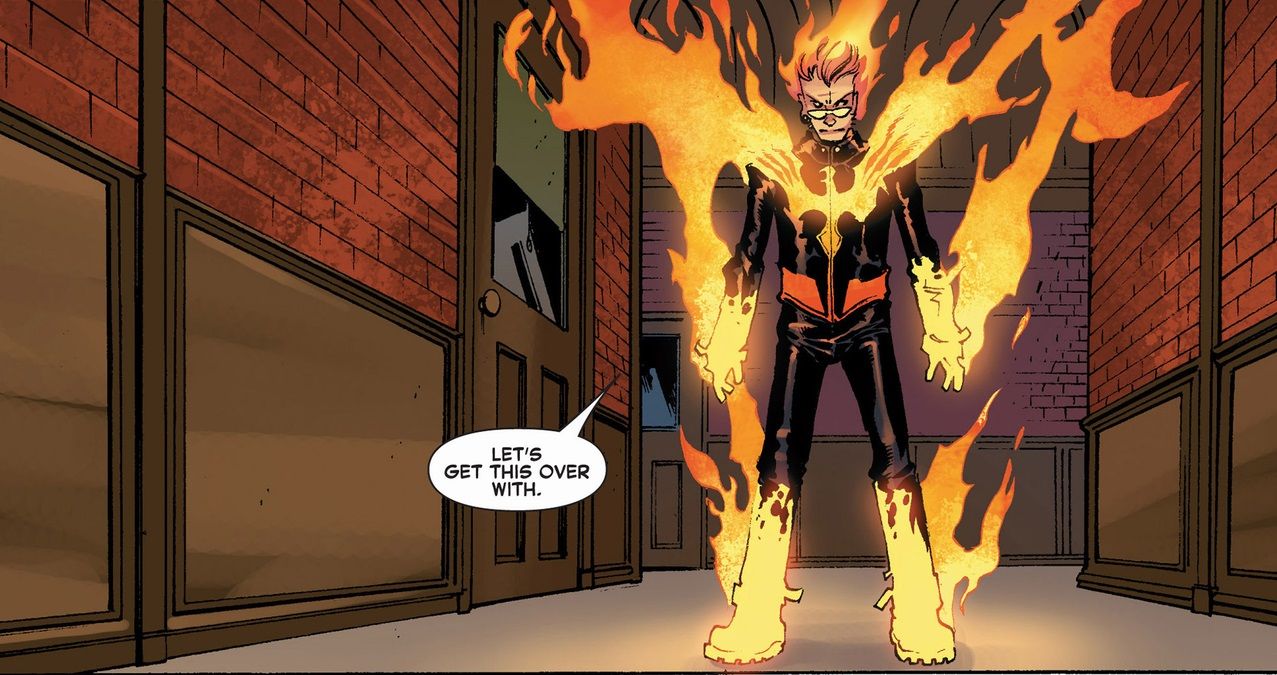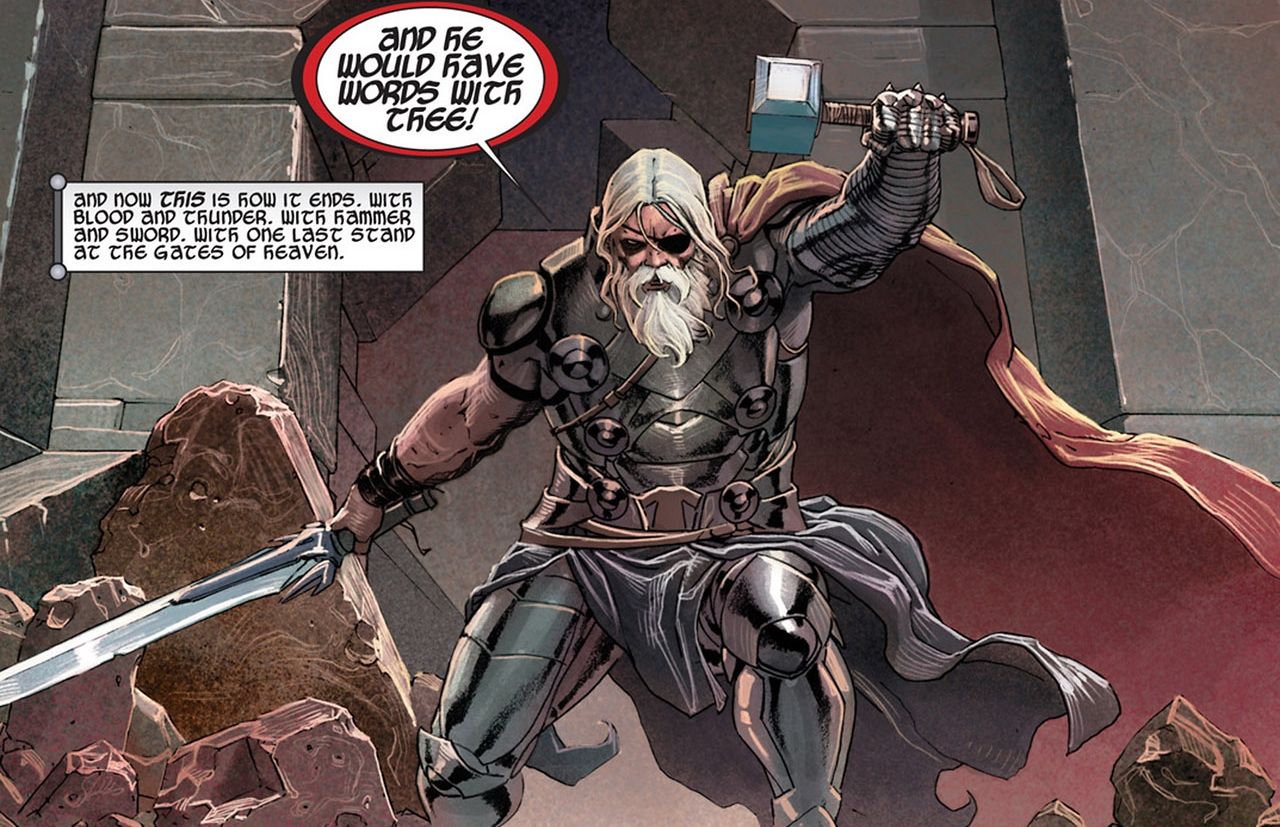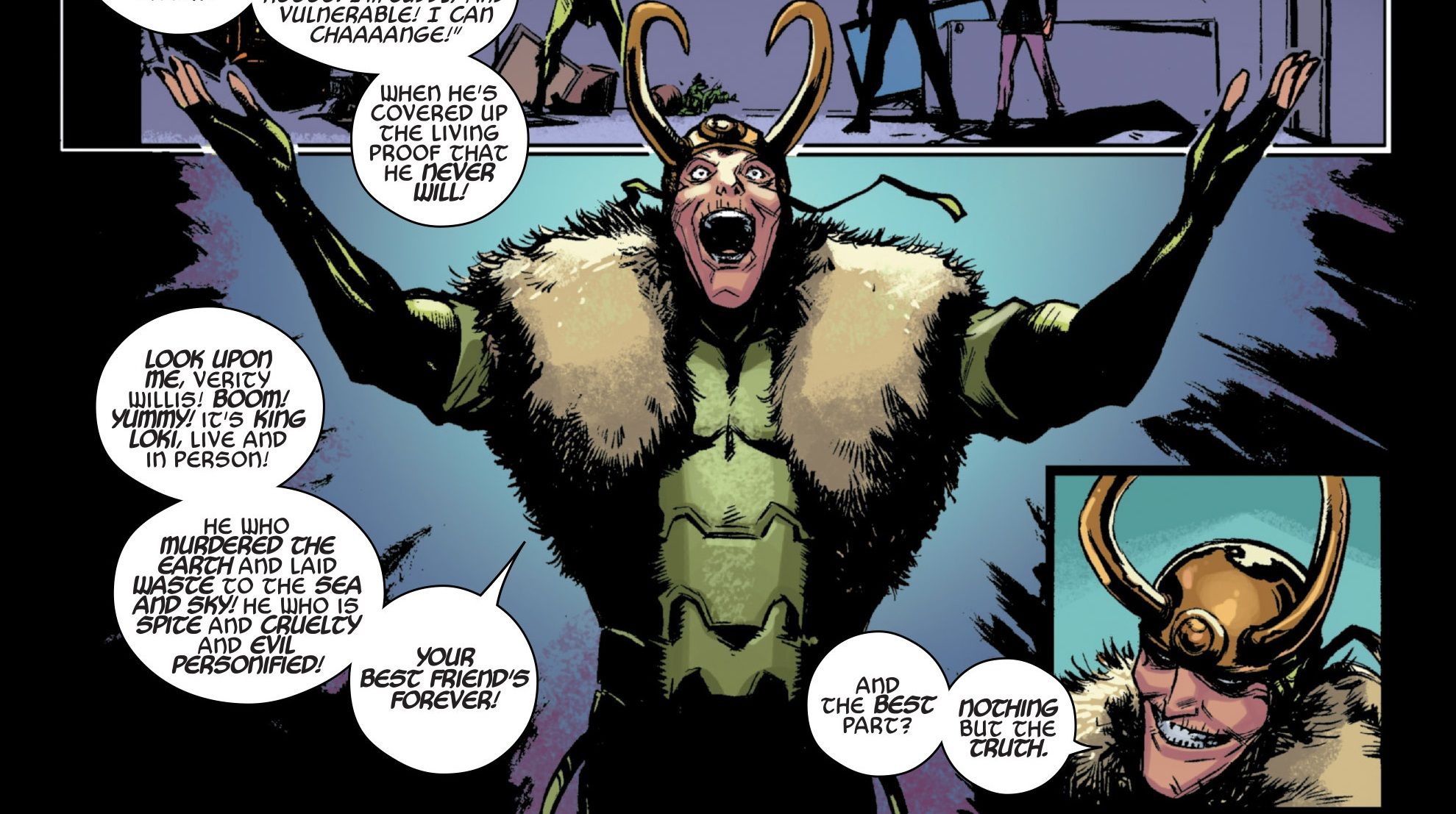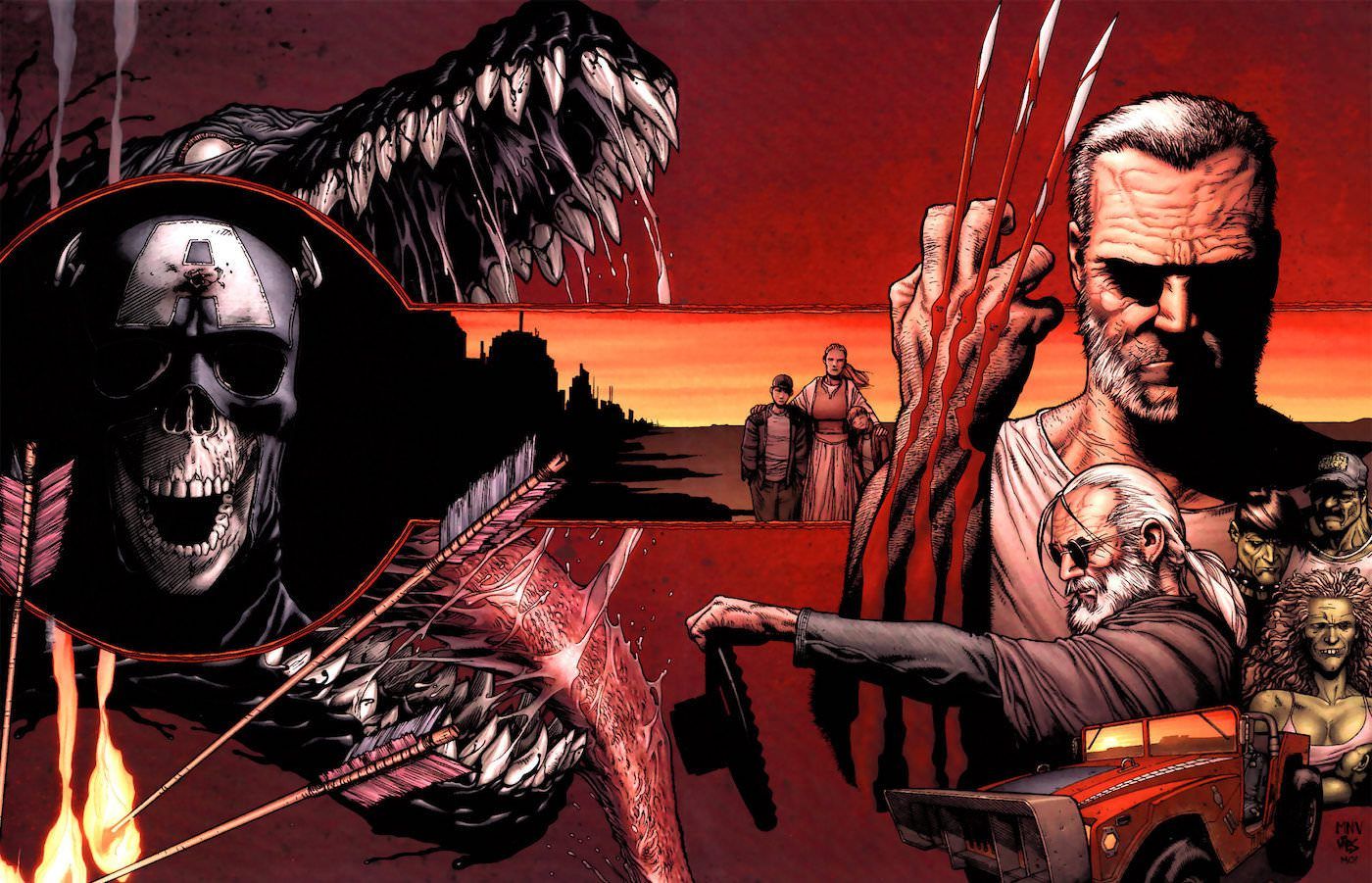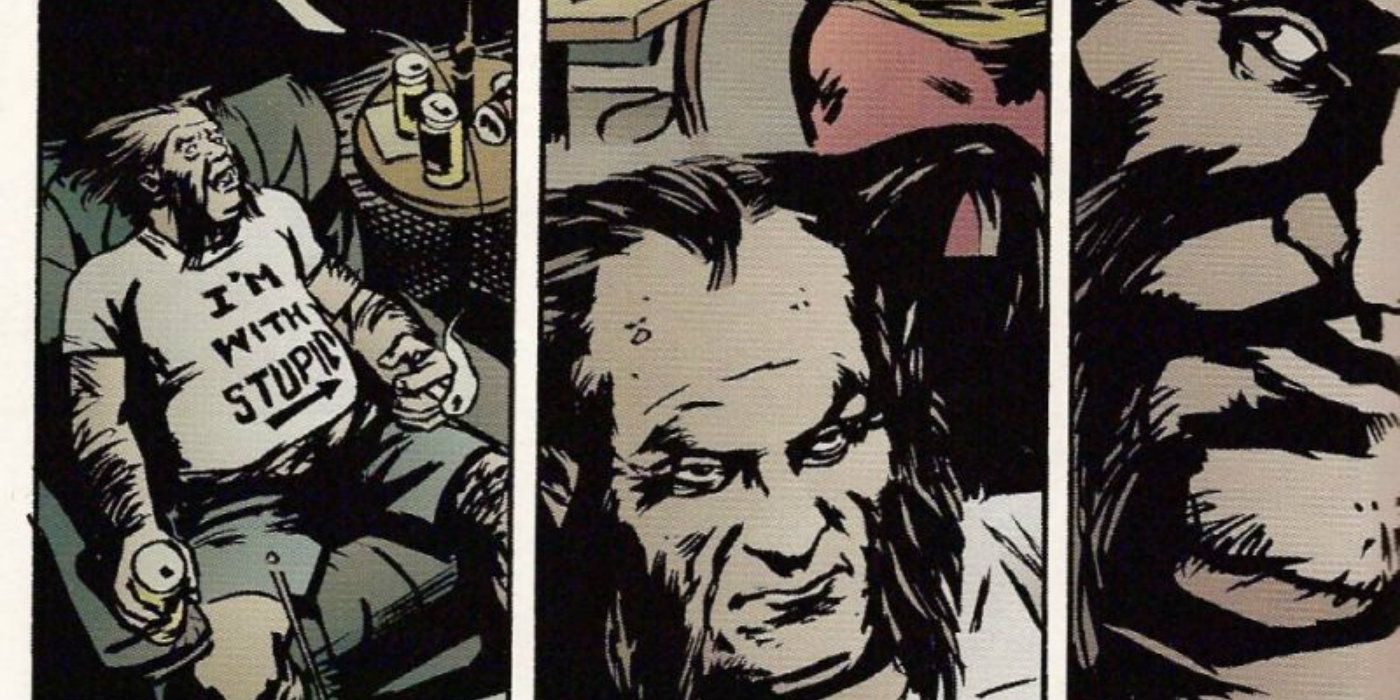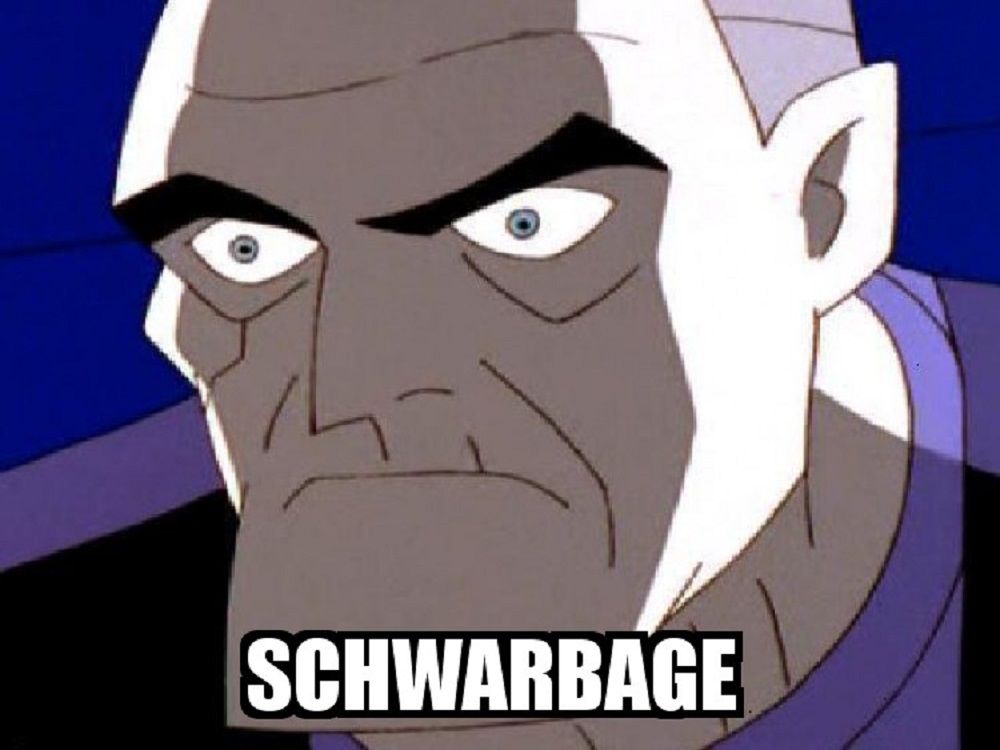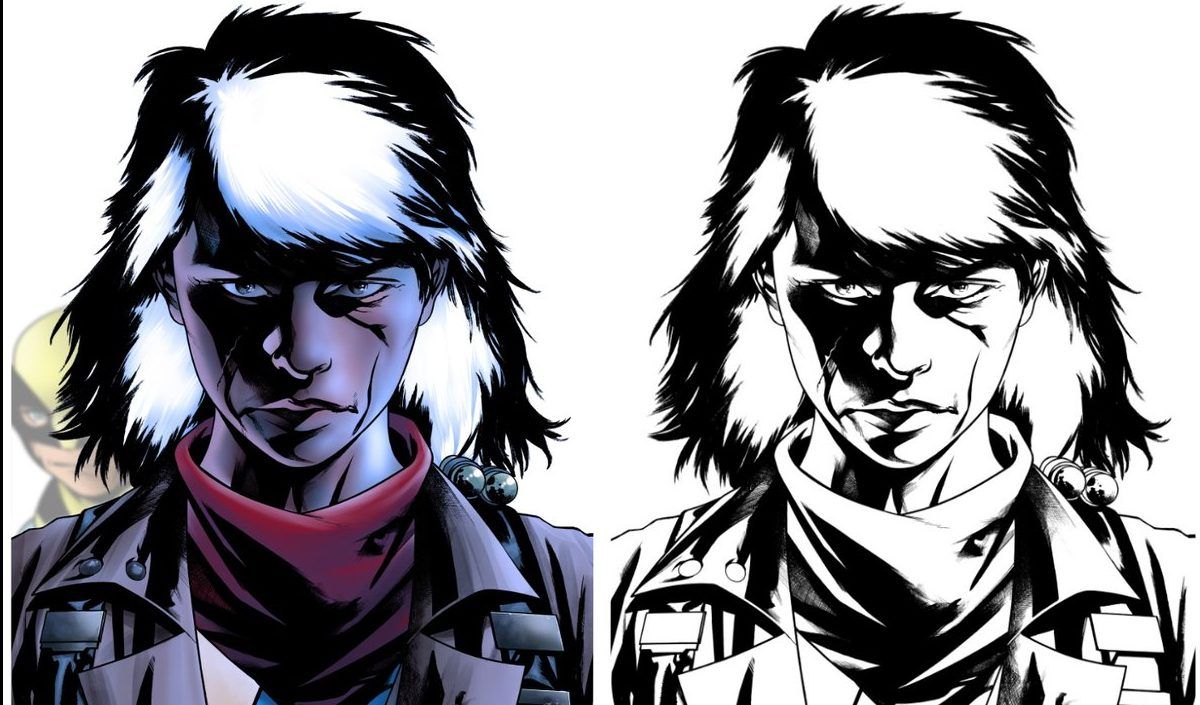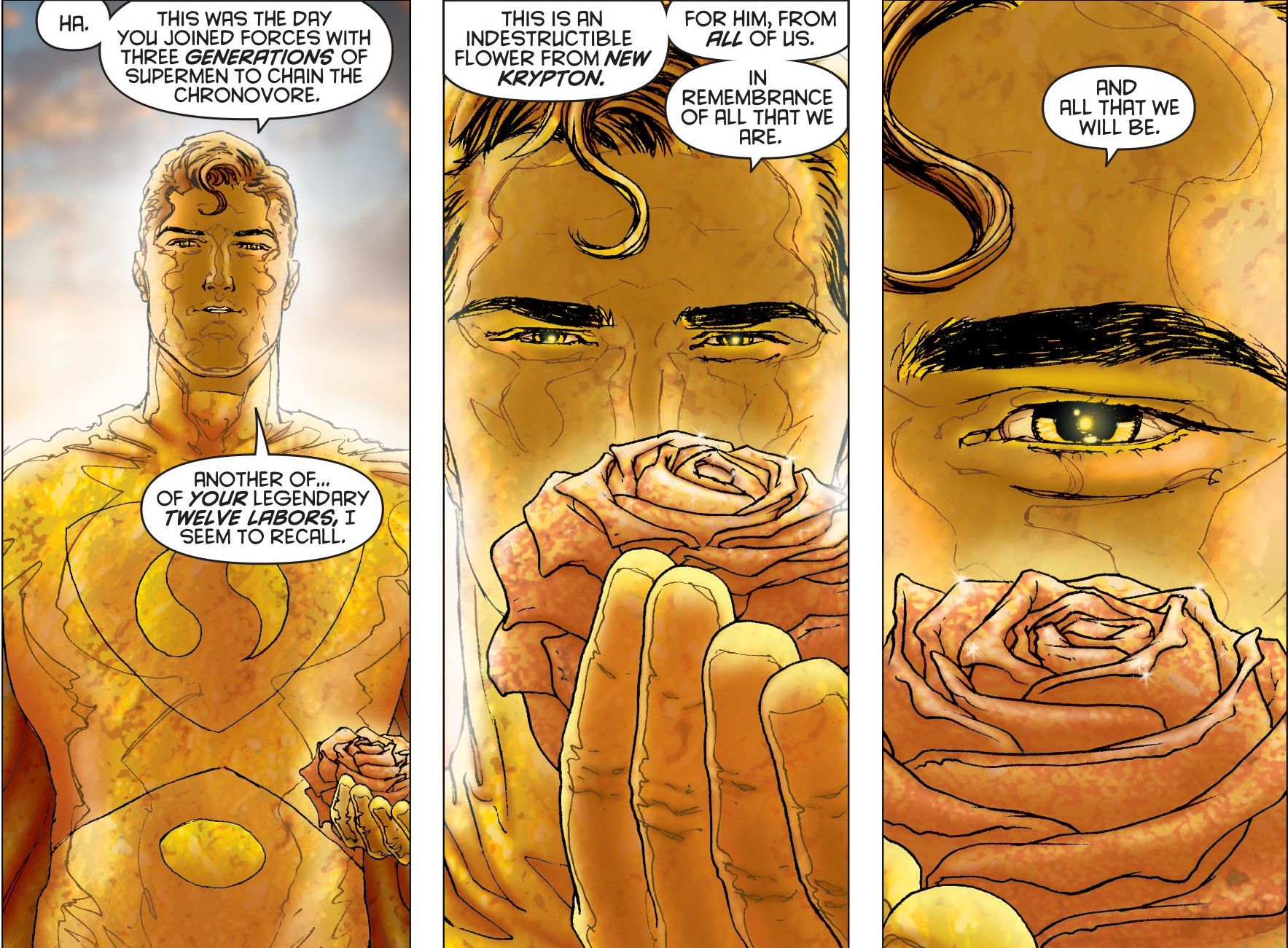One of the great things about superhero comics is the alternate universes. They let us see what the superhero world might be like if things went a little differently, or how things might go in the future. They allow for stories like Final Crisis, Kingdom Come, and The Dark Knight Returns. They also allow us to see what happens when things go wrong. And since most superhero stories exist in a general sci-fi realm, there's also time travel! So the old and grizzled heroes can go back and warn their younger versions, and the younger heroes can go forward to help in a future crisis.
But how do these future versions stack up against their "standard" counterparts? Well, as you may have gathered from the title, some are better, and some are worse. Some are stronger or weaker than their present-day counterparts. Some are just straight up worse characters. Some find themselves in stories that ended up being less than loved by fans. Still others are just straight-up lame. Of course, on the flip side, you've got a whole lot of older characters that are far cooler than their younger counterparts. From grumpy old men, to matured teenage heroes, to WIZARDS, this list has them all.
25 COOLER: THE DARK KNIGHT RETURNS BATMAN
Frank Miller's The Dark Knight Returns is regularly hailed as one of the greatest comics of all time. First published in 1986, the story follows an aging Bruce Wayne called back into the Batsuit by a growing crisis in Gotham. The comic catapulted Miller into super stardom, and remains incredibly popular to this day. It would be adapted into a two-part animated film, and would later serve as partial inspiration for Batman's character in Batman V. Superman. The comics saw Batman battle against an aging Two-Face, an older but still mad Joker, and a Superman forced to serve the US government.
But why, exactly, is this older Batman cooler than the modern-day Batman?
After all, he's older and by his own admission slower. Despite that, he's still capable of taking on and defeating younger, stronger opponents. Showing the young punks how it's really done is a great evolution of the character. Even despite his aging, he still sticks closely to his morals. He also pulls off incredibly convoluted schemes that his younger self could only dream of. In later installments of Miller's Dark Knight saga, he would even be de-aged, resulting in a Batman with decades of experience in a body in its prime.
24 WORSE: KINGDOM COME WONDER WOMAN
Alex Ross and Mark Waid's Kingdom Come is another seminal comic book, usually ranked up alongside The Dark Knight Returns and Watchmen as one of DC's best (those rankings are wrong, though). It takes place several years in the future of the DC universe, following an aging Justice League as it struggles to adapt to a newer, more violent breed of superhero. With most of the older heroes having fled into retirement, it's up to Superman to rally them back, and curb the newer heroes who have sprung up in their absence.
One of the weaker elements of Kingdom Come is its portrayal of Wonder Woman. Having turned more violent and bitter after the retirement of Superman, she has been banished from Themyscira and stripped of her royal title. In turn, she becomes far more brutal and vindictive than in the past. Part of Superman's plan is to set up a gulag to house belligerent heroes, and Wonder Woman wholeheartedly supports this measure. When the prisoners start to riot, she is the first to be in favor of violently suppressing the riot. Her character overall is a far cry from the younger, kinder, more loving hero she was in the past.
23 COOLER: LAST STAND SPIDER-MAN
A key character in the Spider-Man mythos is Madame Web. A seer, she receives and can grant visions of the future. Her particular purview includes the Web of Life and Destiny, from which all Spider-characters across the multiverse draw their abilities. Since she's native to Earth-616, Spider-Man is of particular interest to her. As such, she occasionally reveals tidbits of his future to him, either through visions or outright telling him. In one of Spider-Man's many battles with Kraven the Hunter, she reveals that he is the center of a web of morality that will collapse if he kills Kraven.
This leads to Spider-Man growing ever more brutal, even killing villains like Doctor Octopus.
Spider-Man had seen this future come to pass before, when aiding Doctor Strange in a battle against Dormammu. Strange's spell to defeat Dormammu goes awry, and Spider-Man becomes unstuck in time. There, he sees an older version of himself, standing before Aunt May's grave. He then witnesses a confrontation with the police that ends with his older self's death. Much later, Madame Web reveals the origin and history of the older Spider-Man. He killed Kraven the Hunter in a final battle, after Kraven's Grim Hunt kills his clone-brother Kaine and Mattie Franklin, Spider-Woman. This leads to Spider-Man growing ever more brutal, even killing villains like Doctor Octopus. Also, just look how cool his dang costume is.
22 WORSE: BATTLE OF THE ATOM MOLLY HAYES
Back in 2003, Brian K. Vaughan (the Saga guy) and Adrian Alphona (the Ms. Marvel guy) introduced us to a misfit band of teenage superheroes called the Runaways. Made up of the mostly-superpowered mostly-teenage children of supervillains, the Runaways, as the name implies, run away from their parents after learning their parents are supervillains. The one non-teenage member, Molly Hayes, is a super-strong mutant whose powers have yet to develop fully. They go through a series of adventures, eventually breaking up when their book was cancelled in 2009. Fortunately, Rainbow Rowell and Kris Anka revived the series and the team in 2017.
In the meanwhile, the characters were sort of floating in limbo. A few showed up in the abysmal Avengers Arena, but others just sort of vanished from Marvel. One of the missing Runaways was Molly Hayes. While her younger version would absent until the 2017 revival, Brian Michael Bendis and Frank Cho introduced an older version in Battle of the Atom. This Molly Hayes was a member of the Brotherhood of Evil Mutants, and was far harder, tougher, and meaner than her younger version. She proved to be a relatively minor character, and disappointed many Runaways fans, much like almost every other Runaways character appearance in that time period.
21 COOLER: THE END FRANK CASTLE
Garth Ennis' Punisher MAX run of comics is considered by many to be the absolute definitive take on the character. Removing Frank Castle from the larger chaos of a shared superhero universe, it focused on what was really important: Frank killing vast quantities of bad guys (or, in fan terms, Frank franking franks). Under the MAX imprint, it delivered at-times horrifically brutal violence, right alongside gut-punching emotional moments and Ennis' unique brand of irreverent humor. It would also tiptoe into scathing critiques of the US military-industrial complex. With the addition of Barracuda and Fury: My War Gone By, set in the same universe, it would expand to overall criticism of the U.S.' foreign policy during the Cold War as a whole.
In The Punisher: The End, Ennis sought to create a definitive ending for this version of the character.
World War 3 has come and gone. The bombs have fallen. The world has ended. And Frank Castle has survived. After escaping from the prison he was incarcerated in, he makes his way to New York City, following rumors of a secret bomb shelter constructed by the world's elite. After reaching the shelter, he reveals that he blames the survivors for escalating the War on Terror in the name of profit. Despite being told that they are the last humans left on Earth, and the last hope for humanity, Frank executes them all. He then walks to Central Park, succumbing to radiation poisoning and finally dying.
20 WORSE: OLD MAN THANOS
Thanos has been in the news a lot recently, what with Infinity War blowing up the box office and breaking everyone's heart in the process. The movie firmly established Thanos as one of the most dangerous villains in superhero movies. But in the comics, Thanos has long been one of the most powerful and dangerous foes in the Marvel universe, carrying out several universe-ending or nearly-so plots and schemes. One key difference between movie Thanos and comic Thanos comes from their motivations. Comic Thanos is primarily driven by his love for the the anthropomorphic personification of Death.
But recently, Thanos has gotten over his infatuation. Now more interested in the release of oblivion (not the cosmic abstract Oblivion, just lower case oblivion), he's taken his nihilism to a whole new level. In the recent Thanos series by Donny Cates and Geoff Shaw, the modern-day Thanos finds himself dragged millions of years into the future by a cosmic Ghost Rider (who we'll get to later). There, he meets his ancient self, supposedly vastly more powerful than he is now, but also back in love with Death. As a final act, Old Thanos begs the younger Thanos to kill him. But Thanos refuses, instead returning to the past and taking actions that cause that future to never happen.
19 COOLER: THE MAESTRO
The Hulk is one of Marvel's all-time greats. A founding member of the Avengers, the Hulk has been up, down, and across the Marvel universe, finding his way to distant planets, alternate universes, and even the future. In one of those futures, he encounters himself, or rather, a future version of himself. The Maestro, created by Peter David and George Perez, is a future version of the Hulk living in a future where all superhumans have been killed in a nuclear war, and humanity is on the brink of extinction.
Despite being driven mad by the huge amounts of radiation he's absorbed, the Maestro is still much stronger and much smarter than the Hulk.
Although he was supposedly defeated in their first confrontation, by being sent back in time to the detonation of the gamma bomb that created Hulk, Maestro has proved to be resilient. That is to say, writers like using him. He's confronted the Exiles, Captain Marvel (the Genis flavor), and even returned to life in the present to battle Hulk once again. He also played a major role in Jonathan Hickman's Secret Wars, leading an army of Hulks to overthrow the Beyonder-powered Doctor Doom.
18 WORSE: REIGN SPIDER-MAN
Kaare Andrews' Spider-Man Reign is not remembered particularly fondly. It shows grim alternate future, where Spider-Man has retired in the wake of Mary Jane's death. It also introduced the lovely plot element wherein Mary Jane apparently died of cancer brought on by exposure to Spider-Man's radioactive bodily fluids during intercourse. At the outset, it is a dour, grim look at Spider-Man, a far cry from the happier wisecracking version in the modern day. Although it shares some similarities with Last Stand Spider-Man, it doesn't have the modern day Spider-Man standing there as a viewpoint character.
The story looks at what would happen to New York without Spider-Man. It's been taken over by a sadistic fascist government, brutally enforcing their rule while superhumans are a thing of the past. Peter Parker, now in his late 60s, is working as a florist. J. Jonah Jameson has shut down the Daily Bugle, after realizing it had been used as a propaganda machine. However, he inspires Peter to become Spider-Man again, and he begins dismantling the power of the mayor, secretly under the control of Venom. Venom attempts to take over the city, but Spider-Man stops him, inspiring a new generation of superheroes in the process.
17 COOLER: CYCLOPS
Cyclops is the only character on this list where the present-day version is the older one. Cyclops is one of the original five X-Men, and has been leading the team for decades. After the events of House of M, he steadily became more militant, culminating in Schism, where he takes half of the mutants and starts his own island nation-state off the coast of San Francisco. This in turn leads to a stint as a Phoenix-possessed villain in Avengers vs. X-Men.
The culmination of this character arc comes with his full conversion to a Magneto-esque mutants' rights freedom fighter.
It is when he is on the run from the government and riling up trouble in the name of mutants' rights where Cyclops works best! As part of Brian Michael Bendis' takeover of the X-Men franchise following AvX, he brought the teenage versions of the original five X-Men from the past to the present, including a young version of Cyclops. While TeenClops turned out to be one of the better time-displaced young X-Men (Jean is basically a supervillain, Bobby got slapped with the retcon stick, Beast and Angel became props for their respective romantic interests), there's no real measuring up to the real deal. Not even an extraordinarily lackluster death can stop Cyclops from being right.
16 WORSE: KINGDOM COME CAPTAIN MARVEL
Captain Marvel (or Shazam, as he's known these days) is one of the all-time classic superheroes. For a brief moment in time, he was even more popular than Superman. But because we cannot have nice things, DC's predecessor National Comics sued Captain Marvel publisher Fawcett Comics. Between the lawsuit and declining comics sales, Fawcett eventually shut down and sold off their properties. Captain Marvel eventually wound up in the hands of DC themselves. He would occasionally appear in Justice League titles, bringing his unique brand of optimism and unabashed enthusiasm to the DC universe. Then he showed up in Kingdom Come.
This was not as the unabashedly optimistic boy reporter Billy Batson. Instead, Captain Marvel was reframed as a mentally damaged man-child, brainwashed and mind controlled by a society of villains to be an attack dog. He barely even speaks. This older version of Billy stands in stark contrast to the light-hearted versions of the past, although it's not entirely out of place with later, main-DC-universe versions, especially after Infinite Crisis. Turning such an optimistic icon of the Golden Age into essentially a villain (last minute redemption notwithstanding) made Kingdom Come's critique of the darkness of the '90s ring a little hollow.
15 COOLER: BATTLE OF THE ATOM ICE MASTER
Iceman is another of the original 5 X-Men. He firmly established himself as one of the core members of the X-Men, and in fact is easily one of the most powerful. While not on the scale of someone like Jean Grey, he is able to manipulate ice and snow on a grand scale. In some futures, he even ends the world by losing control of his powers. He can regenerate from literally just a head, and it's possible even a headshot would be unable to kill him. Due to his power and experience, he eventually became a professor at Wolverine's new school after Schism.
He's apparently so immensely powerful that he can create independent clones.
Then came Bendis. Iceman went through a lot under Brian Michael Bendis. Firstly, he is pulled into a future he doesn't want to be in by a dying present-day Beast. Then he runs away with present-day Cyclops' lightly terrorist collection of mutants. Then, he is retconned by Jean Grey into being a gay character. But at the very least, both the past version and the present-day version got to meet a much cooler (no pun intended) version of themselves. In Battle of the Atom, after the appearance of a future Brotherhood of Mutant appears, they are soon followed by a future team of X-Men, including a wizard-looking Iceman. He's apparently so immensely powerful that he can create independent clones, and manipulate ice and snow on a global scale. Plus he looks like a dang wizard and that's pretty cool.
14 WORSE: PHOENIX QUENTIN QUIRE
Quentin Quire was first introduced in Grant Morrison's New X-Men. A student at the Xavier institute, his psychic powers and intellect quickly make him one of Xavier's star pupils. But at his core, he's an anarchist punk. He kicks off what would become one of the defining stories of Morrison's X-Men. After dying in the process he floats around for a bit in an incorporeal state, before returning to the mortal plane to once again cause trouble for anyone who happens to be near him.
During his time dead, he made contact with the Phoenix Force. Jean Grey even had prophetic visions of a Phoenix Quire, perhaps foretelling his future role. While the Phoenix passes up Quire in this instance to go to Jean once again, he still is able to convince the Phoenix to revive someone he cares about. After Morrison departed from New X-Men, Quire's connection to the Phoenix is just sort of quietly ignored. That is, until Bendis. Battle for the Atom sees a future Quentin, now in full command of the Phoenix, appear with the rest of the future X-Men. Many fans found Quentin annoying before (or at least once Morrison left), and seeing him get the Phoenix for real didn't endear him to fans any further.
13 COOLER: KING THOR
Thor is already pretty cool: God of Thunder, guy with a hammer, bashin' bad guys and saving the world. First appearing back in 1962, Thor ended up being a core character at Marvel, founding the Avengers. His arch-nemesis/brother Loki also became a key figure in Marvel, serving as the Avengers' first foe. Throughout the years, Thor has climbed from being a normal human to one of the most powerful beings in existence. He's even ruled Asgard more than a few times, claiming the Odinforce and ascending to the status of Skyfather.
It is in Jason Aaron's Thor: God of Thunder that Thor's future as king of Asgard is fully realized.
Telling a story that stretches from Thor's youth, to the present day, to the far future, Aaron gives the audience a snapshot of three stages of Thor's life. The final one is King Thor. Old and tired, but immensely powerful, King Thor stands toe-to-toe with a god serial killer attempting to wipe out all divinity in the universe. Although ultimately the present-day Thor would defeat the foe, King Thor would later face and defeat Galactus. Also he's got an eyepatch and a Destroyer arm... how cool is that?
12 WORSE: KING LOKI
Loki's been through a lot in the past several years. Going from one of the Avengers' greatest foes, and Thor's archnemesis, he, like the rest of the Asgardians, die in a final Ragnarok. While their death is relatively short-lived, Loki ends up returning in the body of a woman. Not letting that stop him/her from managing proper mischief, he/she sets up a ridiculously convoluted plan to first regain his/her original body, then free himself from the chains of destiny. Along the way, he dies again, and this time he comes back as a child, unaware of his past.
In a series of events that you really need to read all the comics to understand fully (Journey Into Mystery, first and foremost), his past self kills his child self, and the murder weapon becomes a new version of Kid Loki. This version of Loki ages himself up into a young adult, and goes about attempting to be a hero. Eventually, he encounters an older version of himself, who fell back into his old ways and once again became a villain. The present-day Loki proves that Loki can be more than just a villain, and rewrites his own story in order to ascend past his future self.
11 COOLER: OLD MAN LOGAN
Wolverine has long been one of Marvel's most popular characters. For a time, he would appear on covers even if he didn't appear in the actual book, just to boost sales. Even after that period, he continued to show up in multiple comics, often appearing in multiple team books every month. Naturally, he's had several out-of-continuity stories, including Mark Millar and Steve McNiven's Old Man Logan. Following an aged Wolverine who has given up on being Wolverine, it looks at a post-apocalyptic United States ruled by supervillains. Red Skull is president, superheroes have been wiped out, and Hulk and She-Hulk have formed an incestuous hillbilly gang.
This Wolverine is older, more tired, and ready to just stop. He's given up his claws, finally bringing them out again after Hulk kills his family.
After the series ends, he's brought back for Jonathan Hickman's Secret Wars. In the aftermath, he's brought into the main universe to replace the now-dead modern-day Wolverine. He serves as a more stable influence than Wolverine's berserker rage, acting as an older mentor figure that the X-Men had been lacking in the wake of Cyclops, Wolverine, and Xavier's deaths.
10 WORSE: EARTH X WOLVERINE
Marvel's Earth X, published in 1999, followed a similar path to DC's Kingdom Come. Looking at a possible future of the Marvel universe, it examined what happens to aging superheroes attempting to adjust to an ever-changing world. Earth's population has gained superpowers, thanks to Black Bolt secretly releasing the Terrigen Mists into the atmosphere. One of the empowered humans kills most of the world's telepaths upon awakening, including several of the most powerful X-Men. In their wake, Wolverine and a woman claiming to be Jean Grey retire, get married and up living in a flophouse.
Where the Wolverine of Old Man Logan is still Wolverine, despite giving up the name and claws, the Wolverine of Earth X is a fat, balding, lazy drunk. Basically the stereotypical unemployed white trash man, sitting in the recliner and drinking beer all day. This version of Wolverine is a far cry from his younger self, and from other older versions of Wolverine. Most of all, this Wolverine does nothing significant in the story, apparently only existing as a petty slap-down of the character. Eventually, at the end of it all, Wolverine is revealed to be a descendant of Moon Boy (of "and Devil Dinosaur" fame), and takes a swan dive into New York Harbor, never to be seen again.
9 COOLER: BATMAN BEYOND BRUCE WAYNE
In the DC Animated Universe, Batman Beyond stood unique as a glimpse into the future. Set decades after Batman: The Animated Series, it follows Terry McGinnis, heir to the Batman name. McGinnis, a troublemaker, is saved by an elderly Bruce Wayne, 20 years after he left Batman behind. Bruce had already been traumatized by the kidnapping and corruption of Robin by the Joker. And later, due to his age and failing health, Batman broke his one rule and pulled a gun on a criminal.
Although he didn't follow through and pull the trigger, he still realized it was time to hang up the cowl.
After rescuing Terry from a gang of Joker-inspired criminals, Bruce eventually decides to take him under his wing and train him to be the new Batman. While Bruce largely serves as a mentor and mission control for Terry, he does occasionally go out into the field. In one particularly memorable instance, Cranky Old Man Bruce meets the modern-day Batman and other members of the Justice League. Batman attempts to intimidate a criminal, only for his interrogation to fail. Bruce, no longer even in the neighborhood of screwing around, manages to intimidate the thug with merely a few whispers, lamenting that he was ever as green as Batman.
8 WORSE: EXILES KAMALA KHAN
Out of all the many, many diversity legacy heroes Marvel has introduced in recent years, Kamala Khan has repeatedly proven to be one of the most successful. As Ms. Marvel, she brought an earnest energy that many readers felt had been missing since Spider-Man matured to adulthood. Writer G. Willow Wilson quickly established a strong supporting cast, key to any successful hero, and artist Adrian Alphona created a world tinged with humor and absurdity that immediately set Kamala apart from her peers and other heroes. Her unbridled positivity and relatable struggles firmly established her as a new fan favorite.
But then came Exiles. Writer Saladin Ahmed introduced an alternate-universe, older Kamala. Trapped in a post-apocalyptic world, Kamala is a grim, grizzled, dour character, far removed from her origins as an upbeat teen hero. While the character makes sense for the setting, there's always something a little distasteful about taking a "happy" character and reimagining them as a grim and gritty anti-hero. While Exiles is all about exploring alternate realities and seeing alternate versions of 616 heroes, it's still odd to see such a positive character so beaten down. But then, Ahmed's Exiles is also a study in irony. While Kamala Khan is grim and gritty, the Wolverine introduced is childlike and friendly.
7 COOLER: SUPERMAN PRIME
If you're reading this list, you probably know who Superman is. But just in case, Superman is THE superhero. The first one that inspired all the others. And one of his biggest stories is All-Star Superman. Written by Grant Morrison with art by Frank Quitely, it showed an archetypal look at the character. His biggest feats, his grandest stories, all carried out in his last days. In his final moments, he flies into the sun, restarting and revitalizing it as it dies, saving the world one last time.
In reality, Superman built a great machine within the sun, to keep it running for millions of years into the future.
This ties in with another Grant Morrison comic, written nearly a decade before. In DC One Million, he took us on a tour of what the DC Universe would look like in the 853rd century, chosen as the century when DC would publish the one millionth issue of their comics. At the end of the event, we see Superman emerge from the sun, now turned golden. Due to marinating in yellow sunlight for millennia, he now has the power of a god, augmented with the power of a Green Lantern ring.
6 WORSE: KINGDOM COME MARTIAN MANHUNTER
Martian Manhunter is a founding member of the Justice League. First appearing in Detective Comics in 1955, J'onn J'onnz has long been a classic DC hero. Last of the green Martians, J'onnz is an immensely powerful hero. As strong as Superman, with matching eyebeams, he also has impressive telepathic abilities, and shapeshifting powers. He even made the jump to a wider audience, with the DCAU's Justice League animated series, where he played a major role. While he's been largely absent from DC's New 52 reboot and Rebirth relaunch, he's finally returning to the comics, and the Justice League, with Scott Snyder's No Justice.
If you've been reading this article up to this point, you have probably read about Kingdom Come. A dark vision of the DC Universe's future, it's fairly disrespectful to most of the founding Justice League members. Martian Manhunter is no exception. His mind shattered by attempting to open up to every human on Earth, the former superhero has been reduced to an invalid, barely able to hold his own coffee cup. He acts essentially as a prop, allowing Batman to see that Billy Batson has become a brainwashed supervillain. Although he wants to continue aiding Batman, he's sent home, exhausted.

